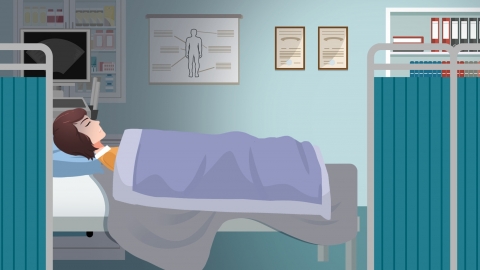What should I do if I still have HPV infection after a total hysterectomy?
HPV infection may persist after total hysterectomy due to residual cervical or vaginal stump tissue infected with HPV, low immune function, inflammation of the vaginal stump, atrophic vaginitis, bacterial vaginosis, etc. This condition can be improved through immune enhancement and medical interventions. If abnormal vaginal bleeding or foul-smelling discharge occurs, prompt medical attention is necessary.
1. Residual cervical or vaginal stump tissue post-surgery: If HPV-infected tissue remains in the cervix or vaginal stump after hysterectomy, the virus may persist and cause ongoing infection, possibly accompanied by mucosal congestion at the stump site. It is recommended to undergo regular HPV testing and cytological examinations of the vaginal stump. As directed by a physician, medications such as recombinant human interferon α2b vaginal effervescent tablets, anti-HPV biological protein dressings, and Baofukang suppositories may be used to alleviate symptoms.
2. Reduced immune function: Poor postoperative recovery and weakened immunity may impair the body's ability to clear HPV, leading to persistent infection, possibly accompanied by fatigue and frequent colds. It is advised to improve nutritional intake, consume more high-quality proteins, fruits, and vegetables, engage in moderate low-intensity exercise, ensure sufficient sleep, and enhance the body’s antiviral defenses.

3. Vaginal stump inflammation: Poor healing of the surgical stump may lead to inflammation triggered by bacteria or HPV, manifesting as redness and swelling of the stump, increased discharge, and possibly mild pain. Under medical guidance, treatments such as metronidazole gel, clindamycin cream, or cefuroxime axetil tablets may be used to relieve symptoms.
4. Atrophic vaginitis: Postoperative decline in estrogen levels leads to thinning of the vaginal mucosa and reduced resistance, making it more susceptible to HPV and bacterial invasion. Discharge is typically pale yellow and watery, often accompanied by vaginal dryness. Under medical supervision, topical treatments such as conjugated estrogens cream, Lactobacillus vaginal capsules, or estriol ointment may be used to improve symptoms.
5. Bacterial vaginosis: Postoperative imbalance of vaginal flora allows overgrowth of anaerobic bacteria, causing infection. Discharge appears grayish-white and watery with a fishy odor, possibly accompanied by mild itching. As prescribed by a doctor, medications such as metronidazole suppositories, tinidazole tablets, or clindamycin phosphate vaginal suppositories can help manage symptoms.
Daily care should include maintaining external genital hygiene, washing daily with warm water, wearing clean cotton underwear, avoiding unhygienic sexual practices, undergoing regular postoperative follow-up exams, and maintaining a positive mindset to support recovery and viral clearance.





